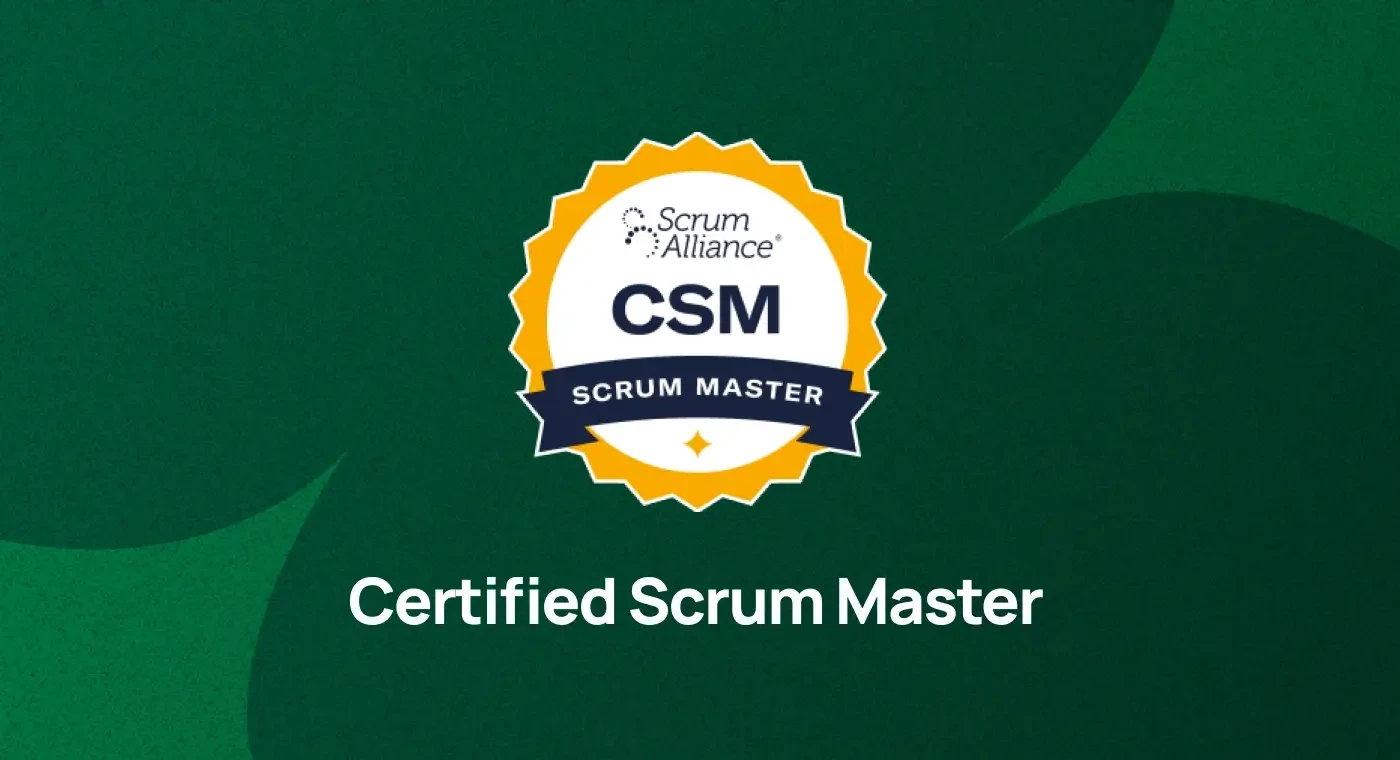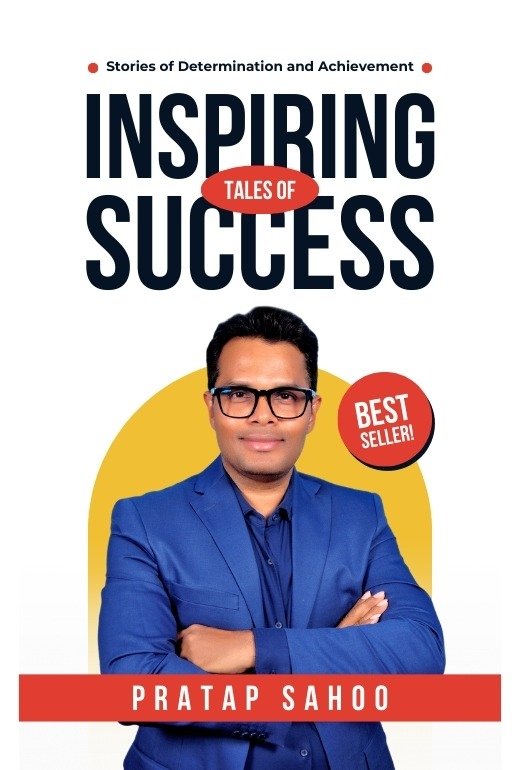Currently Empty: ₹0.00
Agile Management
Agile Testing Interview Questions and Answers
A product owner in Scrum team who is responsible for the outcome of the project. He maximizes the value of the product by managing and optimizing the product backlog. A product owner’s key responsibility is to define user stories and create a product backlog. No matter whether you are a beginner or an intermediate or an experienced product owner, this write-up will aid you in increasing your confidence and knowledge of product owner. The questions below are divided into various topics catering to product owner. They range from story grooming, user story splitting and estimation, burn down charts and more. Also, this guide provide step-by-steo explanations for every question which will help you understand the concepts well. With Product Owner interview questions, you can be confident about your preparation for the upcoming interview.
Question 1-5
1. What is Agile Testing?
Agile testing is a continuous testing practice that follows the principles of Agile software development. It emphasizes collaboration, early testing, and frequent feedback.
2. What are the main principles of Agile Testing?
Customer satisfaction, continuous feedback, early testing, face-to-face communication, and working software are key principles.
3. When does testing begin in Agile?
Testing begins from day one and continues throughout the development lifecycle.
4. What is the role of a tester in an Agile team?
Testers collaborate with developers and business analysts, write and execute tests, automate where possible, and help ensure quality throughout.
5. What is the difference between Agile Testing and Traditional Testing?
Agile testing is iterative, collaborative, and occurs throughout development, whereas traditional testing is phase-based and occurs after development.
Question 5-10
6. What are the common Agile methodologies?
Scrum, Kanban, XP (Extreme Programming), and SAFe are widely used Agile methods.
7. What is a user story?
A user story is a short, simple description of a feature from the user’s perspective.
8. What is the Definition of Done (DoD)?
It’s a shared understanding of what it means for work to be complete, often including development, testing, and documentation.
9. What is Test-Driven Development (TDD)?
TDD is a development approach where tests are written before code to ensure the feature meets the requirements.
10. What is Behavior-Driven Development (BDD)?
BDD focuses on testing the system’s behavior using simple, natural language and collaboration between stakeholders.
Question 10-15
11. What are acceptance criteria?
Conditions that must be met for a story to be accepted as complete.
12. What is exploratory testing?
Simultaneous learning, test design, and test execution performed without pre-scripted test cases.
13. What is a test case?
A set of conditions under which a tester determines whether a feature works as intended.
14. What is regression testing?
Testing previously developed features to ensure new changes haven’t broken existing functionality.
15. What is continuous integration (CI)?
A development practice where code is integrated frequently and verified by automated builds and tests.
Question 15-20
16. What tools are used in Agile Testing?
Examples: JIRA, TestRail, Selenium, Cucumber, JUnit, TestNG, Postman, Jenkins.
17. What is an Agile Testing Quadrant?
A model that helps teams identify different types of tests: unit, functional, performance, and exploratory.
18. What is sprint planning?
A meeting to determine which items from the backlog will be delivered in the next sprint.
19. What is a sprint review?
A demonstration of completed work at the end of the sprint to stakeholders.
20. What is a sprint retrospective?
A meeting to reflect on the sprint and identify improvement opportunities.
Question 20-25
21. What is velocity in Agile?
The amount of work completed by a team in a sprint, usually measured in story points.
22. What is a burn-down chart?
A visual representation of work remaining in the sprint or project.
23. How do testers contribute during sprint planning?
By estimating test effort, identifying test cases, and clarifying requirements.
24. What is a bug or defect?
An issue in the application that causes incorrect or unexpected results.
25. How are bugs tracked in Agile?
Using tools like JIRA, Trello, or Azure DevOps, with priority and sprint linkage.
Question 25-30
26. What are some types of testing done in Agile?
Unit testing, integration testing, system testing, acceptance testing, and exploratory testing.
27. What is automated testing?
Using tools to execute tests automatically and compare actual outcomes with expected results.
28. What is manual testing?
Tests executed by a human without automation scripts.
29. Why is automation important in Agile?
It enables frequent and fast testing, supports continuous integration, and ensures regression coverage.
30. What is a build?
A compiled version of the software made available for testing.
Question 30-35
31. What is the role of a tester in Scrum ceremonies?
Active participation in planning, reviews, retrospectives, and stand-ups to provide input and raise quality concerns.
32. What is pair testing?
Two people (e.g., tester and developer) test together on the same machine to improve coverage and share knowledge.
33. What is smoke testing?
Basic testing to ensure that critical functionalities work after a build.
34. What is sanity testing?
A narrow test to confirm that a particular bug fix or functionality works as expected.
35. What is Agile Test Pyramid?
A model that promotes having more unit tests, fewer integration tests, and even fewer UI tests.
Question 35-40
36. What is performance testing?
Testing how the system performs under a certain load or stress.
37. What is load testing?
Checking system behavior under expected user loads.
38. What is stress testing?
Testing under extreme conditions to find system limits.
39. What is usability testing?
Assessing how easy and user-friendly an application is.
40. What is acceptance test-driven development (ATDD)?
Similar to BDD, it involves writing acceptance tests before code, promoting collaboration.
Question 40-45
41. What are personas in testing?
Fictional characters representing target users to guide realistic test scenarios.
42. How do you prioritize testing tasks in Agile?
Based on risk, business value, story priority, and dependencies.
43. What is refactoring?
Improving code structure without changing its behavior, often followed by regression tests.
44. What are mock objects?
Simulated objects used in testing to mimic real components.
45. What is integration testing?
Testing the interaction between different components or systems.
Question 45-50
46. What is white-box testing?
Testing based on the internal logic of the application.
47. What is black-box testing?
Testing without knowledge of the internal code; focuses on inputs and outputs.
48. What is static testing?
Testing without executing code, like code reviews or documentation review.
49. What is dynamic testing?
Testing that involves executing the software and checking the runtime behavior.
50. What is Agile’s approach to quality?
Quality is everyone’s responsibility; testing is integrated throughout development, not an afterthought.
Question 1-5
1. How do Agile testers collaborate with developers and product owners?
By participating in story refinement, clarifying acceptance criteria, pairing on tests, and ensuring shared understanding of requirements.
2. How do you decide what to automate in Agile testing?
Automate high-risk, frequently executed, and repetitive tests such as smoke tests, regression suites, and critical user paths.
3. What is the role of testers during backlog grooming sessions?
Testers clarify requirements, define acceptance criteria, identify test scenarios, and flag potential risks.
4. How do you ensure testing keeps up with rapid Agile development?
Through early involvement, automation, continuous testing, and collaborative planning.
5. What is shift-left testing?
A practice of involving testing activities earlier in the development process to identify defects sooner.
Question 5-10
6. What is the difference between functional and non-functional testing?
Functional tests validate what the system does; non-functional tests evaluate performance, security, and usability.
7. What is exploratory testing and when should it be used?
Unscripted testing based on exploration and learning; useful for discovering unknown issues or during tight timelines.
8. How do you handle changing requirements in the middle of a sprint?
Discuss with the team and PO, assess impact, re-prioritize if necessary, and re-plan if the change is critical.
9. What is the role of Agile testers in a CI/CD pipeline?
Design automated tests, ensure coverage, verify builds, and maintain test reliability to enable fast feedback.
10. What is context-driven testing?
Testing that adapts to the specific context, product, and team instead of following a fixed process.
Question 10-15
11. What is the purpose of a sprint review from a testing perspective?
To demonstrate completed stories, verify acceptance criteria, and gather feedback for improvement.
12. What is story splitting and how do testers help with it?
Breaking large stories into smaller ones; testers contribute by identifying testable units and logical divisions.
13. What are the benefits of test automation in Agile?
Faster feedback, reduced manual effort, reliable regression testing, and higher confidence in builds.
14. What are stubs and drivers in testing?
Stubs simulate lower-level modules; drivers simulate higher-level modules during integration testing.
15. How do you estimate testing effort for a story?
Based on complexity, risk, required environments, and dependencies.
Question 15-20
16. What is the difference between smoke and regression testing in Agile?
Smoke testing checks basic functionality post-build; regression testing verifies unchanged features still work.
17. What is an Agile testing matrix?
A tool to map various testing types against phases or story lifecycle to ensure coverage.
18. How do you ensure test coverage in fast-moving Agile teams?
Use checklists, test charters, pair testing, and trace tests back to user stories and acceptance criteria.
19. What is the role of BDD tools like Cucumber in Agile testing?
They allow collaboration using Gherkin syntax to write executable specifications based on user behavior.
20. What is Gherkin syntax?
A human-readable language for defining test cases using Given-When-Then structure.
Question 20-25
21. What is a flaky test and how do you handle it?
A test that produces inconsistent results; resolve by improving synchronization, data setup, and test logic.
22. What is a test harness?
A framework that provides test execution, setup, and logging support for automated testing.
23. How do Agile testers manage technical debt?
By raising awareness, tracking it in the backlog, and supporting regular refactoring and enabler stories.
24. How do you perform cross-browser testing in Agile?
Use automation tools like Selenium Grid or BrowserStack and prioritize based on user analytics.
25. How do you ensure mobile app testing in Agile cycles?
By using emulators, real devices, automation tools, and prioritizing based on user platforms.
Question 25-30
26. What are quality attributes and how are they tested in Agile?
Attributes like performance, reliability, usability; tested through non-functional tests and user feedback.
27. What is mutation testing?
A method of evaluating test quality by intentionally introducing defects and ensuring tests catch them.
28. What is the difference between verification and validation?
Verification checks if the product is built correctly; validation checks if the right product is built.
29. How do you create a test strategy for an Agile team?
Define test levels, responsibilities, tools, automation plan, and review as the team evolves.
30. What are personas, and how are they useful in Agile testing?
Fictional users created to understand user behavior and ensure test cases reflect real user needs.
Question 30-35
31. How do you use risk-based testing in Agile?
Prioritize testing based on impact and likelihood of failures to optimize effort.
32. What are acceptance tests and how are they used in Agile?
Tests verifying if a user story meets its acceptance criteria; written before development and automated where possible.
33. What is test debt?
Unwritten or unexecuted tests resulting from time constraints or poor planning.
34. What is continuous testing?
The practice of testing throughout the development lifecycle, ensuring constant feedback.
35. What is equivalence partitioning?
A test design technique dividing input data into valid/invalid partitions for efficient testing.
Question 35-40
36. What is boundary value analysis (BVA)?
A technique that focuses testing on edge values of input ranges.
37. How do you use exploratory testing charters?
Define a mission for a session, focus on specific features or risks, and capture observations.
38. What is session-based testing?
Time-boxed exploratory testing with a defined goal, documentation, and review.
39. What is test data management in Agile?
Creating, maintaining, and controlling test data to ensure consistent and valid test results.
40. What is test environment management?
Ensuring test environments are configured, available, and stable to support testing needs.
Question 40-45
41. How do you implement A/B testing in Agile?
By comparing two versions (A and B) with real users and analyzing which performs better.
42. What are the challenges of testing in Agile?
Rapid changes, evolving requirements, tight timelines, and balancing automation vs manual testing.
43. What is feature toggling and how does it impact testing?
Releasing features behind switches; testers must validate toggled and untoggled states.
44. How do you test APIs in Agile?
Using tools like Postman or RestAssured for functionality, performance, and security testing.
45. What is contract testing?
Testing the integration between services by validating input/output contracts (e.g., with Pact).
Question 45-50
46. How do you test microservices in Agile?
Through unit tests, contract tests, integration tests, and by validating service interactions.
47. How do you test stories with limited acceptance criteria?
Collaborate with the PO to clarify criteria, use examples, and add missing scenarios collaboratively.
48. What’s the difference between scenario testing and test case-based testing?
Scenario testing focuses on realistic user journeys; test case testing is more granular and functional.
49. How do you ensure test automation is maintainable?
Follow good coding practices, use page object models, modularize code, and review regularly.
50. How do you adapt your testing strategy for DevOps environments?
Shift testing left and right, integrate automated tests in pipelines, and enable rapid feedback loops.
Question 1-5
1. How do you integrate testing strategies across microservices in an Agile environment?
Use a layered approach: unit testing per service, contract testing (e.g., Pact), end-to-end flows across services, and service virtualization to simulate dependencies.
2. How do you apply testing in a Continuous Deployment (CD) environment?
Automate as many test layers as possible (unit, integration, E2E), implement feature toggles, perform canary deployments, and monitor real-time production metrics.
3. What is chaos testing, and how is it applied in Agile teams?
Chaos testing involves intentionally breaking components in a controlled way to test system resilience and recovery, especially in distributed or cloud-native environments.
4. How do you ensure quality across Agile at scale (e.g., SAFe)?
Establish quality standards, align teams on Definition of Done, use shared test automation frameworks, coordinate testing across ARTs, and conduct PI-level integration tests.
5. What are the most effective ways to test asynchronous events in Agile systems (e.g., message queues, Kafka)?
Use mock consumers/producers, validate message schemas, perform contract testing, and use logs to assert side effects.
Question 5-10
6. How do you manage and validate test data in a production-like environment?
Mask sensitive data, use synthetic data generators, maintain data consistency across systems, and automate refresh and cleanup routines.
7. How do you manage test environments in containerized and Kubernetes-based Agile setups?
Use Docker images, infrastructure-as-code (IaC), namespaces for isolation, automated deployment pipelines, and ephemeral environments.
8. How do you design a test strategy for AI/ML-based features in Agile?
Define testable success metrics, validate data integrity, test model predictions with edge cases, and monitor model drift post-deployment.
9. What are some key considerations for testing blockchain applications in Agile?
Validate smart contracts, test consensus mechanisms, verify immutability and transaction integrity, and simulate edge cases like forks or latency.
10. How do you apply risk-based testing in Agile projects with short iterations?
Continuously re-assess risks, collaborate with stakeholders to prioritize critical paths, and adjust test scope dynamically based on risk impact.
Question 10-15
11. How do you apply test orchestration and parallel execution in Agile pipelines?
Use tools like Jenkins, GitLab, or CircleCI to define test stages and execute them concurrently across containers or environments to optimize feedback time.
12. How do you test IoT solutions using Agile practices?
Simulate device inputs, validate real-time data streams, test connectivity scenarios, and automate field updates using hardware-in-the-loop testing.
13. What is mutation testing and how can it be used to improve Agile test quality?
It involves modifying code (mutants) to check if tests catch the changes. High mutation coverage indicates strong unit test quality.
14. How do you incorporate security testing into Agile workflows?
Integrate SAST/DAST tools in CI/CD, conduct threat modeling during backlog grooming, and apply secure coding practices in pair programming and reviews.
15. How do you test legacy systems in an Agile transformation?
Wrap legacy functionality in automated regression tests, prioritize based on business value, and incrementally refactor and test in parallel to new stories
Question 15-20
16. How do you ensure accessibility (a11y) testing in Agile teams?
Use tools like Axe, Lighthouse, and manual screen reader testing; integrate checks into the CI pipeline and educate teams on WCAG compliance.
17. How do you manage and scale test automation across multiple Agile teams?
Create reusable libraries, define automation standards, adopt a shared automation framework, and establish a Test Automation Center of Excellence (CoE).
18. How do you apply test heuristics in complex Agile systems?
Use mnemonics like SFDIPOT (Structure, Function, Data, Interfaces, Platform, Operations, Time) to guide exploratory testing and scenario generation.
19. How do you balance automated and manual testing in high-compliance Agile environments (e.g., finance, healthcare)?
Automate stable and high-risk areas, perform exploratory and compliance-specific manual testing, and maintain detailed test documentation and audit trails.
20. How do you ensure observability and traceability in Agile testing?
Implement structured logging, distributed tracing, dashboards, and link tests to user stories and defects in tools like JIRA and Zephyr.
Question 20-25
21. How do you handle Agile testing when teams follow dual-track development (Discovery vs Delivery)?
Engage early in the discovery phase, define exploratory test charters for new ideas, and align automated test development with delivery track stories.
22. How do you measure test effectiveness in Agile?
Metrics like defect leakage, test coverage, automation pass rates, escaped defects, and story-level validation success.
23. How do you test systems integrated with third-party APIs under Agile constraints?
Mock external services, validate contracts, implement retry/error-handling logic, and monitor for external service degradation or downtime.
24. How do you guide non-technical Agile team members in quality advocacy?
Promote shared ownership of quality, provide visual tools (test matrices), train them in exploratory testing, and involve them in defining acceptance tests.
25. What is your Agile testing vision for a digital-first, DevOps-integrated enterprise?
Embed quality in every stage, automate where it adds value, use data to drive decisions, build a culture of collaboration, and enable rapid, safe delivery of customer value.
Description
The Product Owner is a pivotal role in an Agile team, serving as the primary liaison for stakeholder needs and representing the team’s goals and progress. They are solely accountable for maintaining the quality and value of the team’s output and own the responsibility for managing the product backlog.
Demand for skilled Product Owners is strong across industries. A quick look at job postings shows top companies actively seeking candidates for this role. Currently, there are over 300 open Product Owner positions on LinkedIn in Spain alone. Research indicates that the average annual salary for a Product Owner in the United States is around $105,158, while in India, the average salary is approximately ₹9,97,286 per year, according to Indeed.








